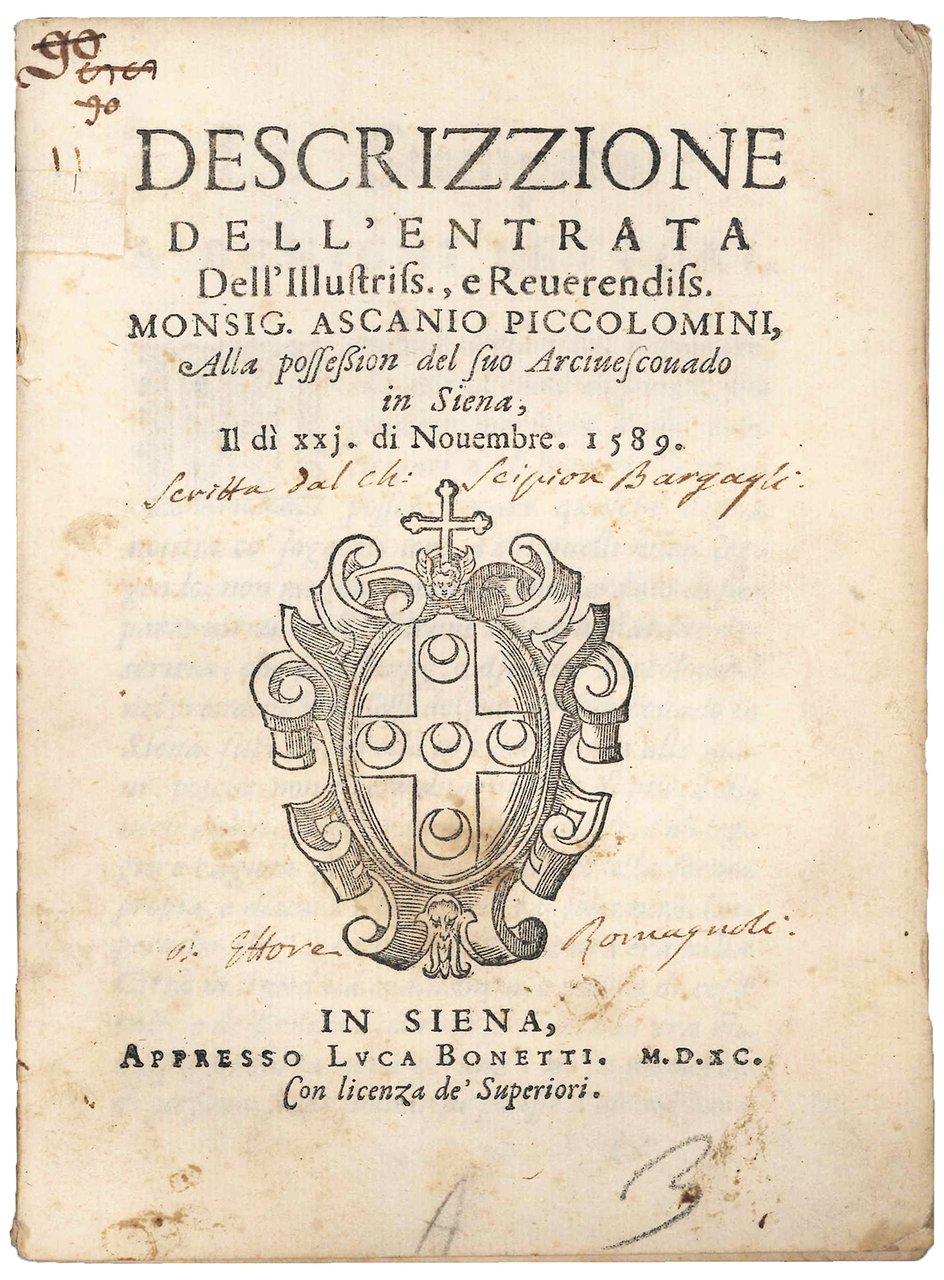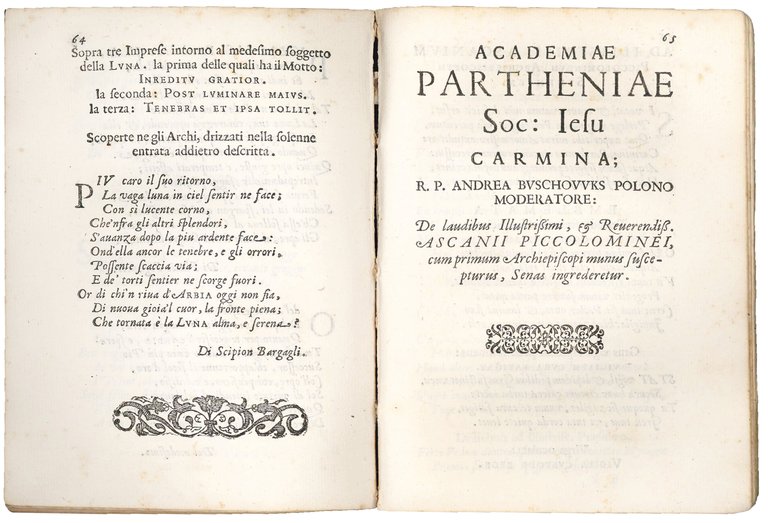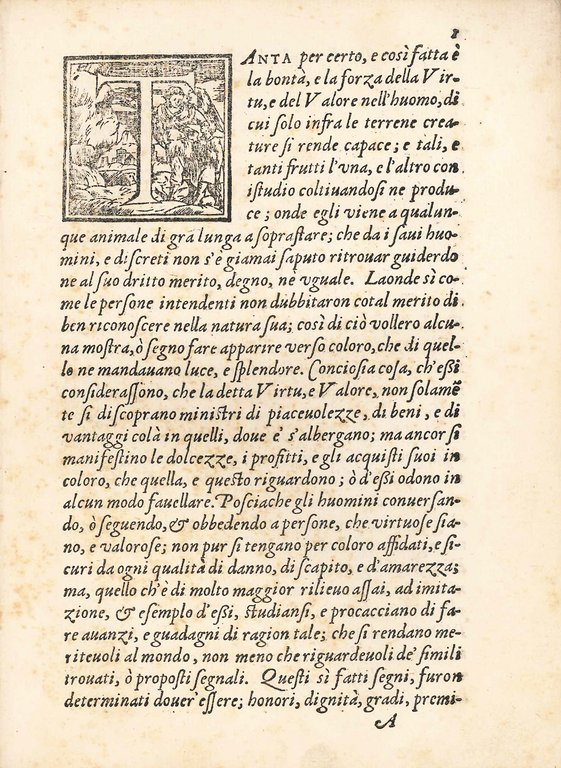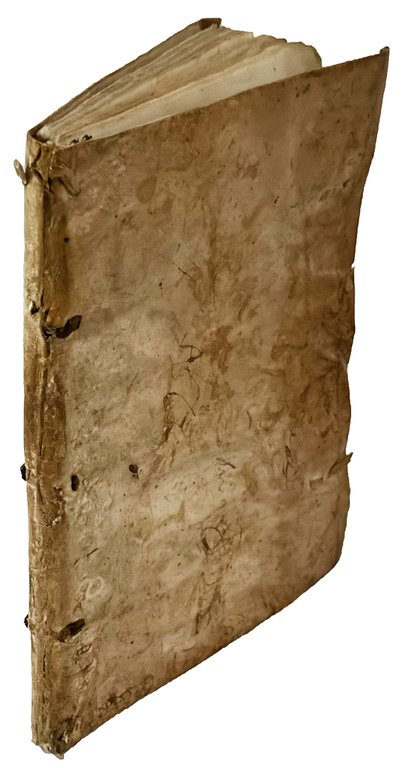



Libri antichi e moderni
BARGAGLI, Scipione (1540-1612)
Descrizzione dell'entrata dell'Illustriss., e Reverendiss. Monsig. Ascanio Piccolomini, alla possession del suo arcivescovado in Siena, il dì xxj di novembre 1589
Luca Bonetti, 1590
2800,00 €
Govi Libreria Antiquaria
(Modena, Italia)
Le corrette spese di spedizione vengono calcolate una volta inserito l’indirizzo di spedizione durante la creazione dell’ordine. A discrezione del Venditore sono disponibili una o più modalità di consegna: Standard, Express, Economy, Ritiro in negozio.
Condizioni di spedizione della Libreria:
Per prodotti con prezzo superiore a 300€ è possibile richiedere un piano rateale a Maremagnum. È possibile effettuare il pagamento con Carta del Docente, 18App, Pubblica Amministrazione.
I tempi di evasione sono stimati in base ai tempi di spedizione della libreria e di consegna da parte del vettore. In caso di fermo doganale, si potrebbero verificare dei ritardi nella consegna. Gli eventuali oneri doganali sono a carico del destinatario.
Clicca per maggiori informazioniMetodi di Pagamento
- PayPal
- Carta di Credito
- Bonifico Bancario
-
-
Scopri come utilizzare
il tuo bonus Carta del Docente -
Scopri come utilizzare
il tuo bonus 18App
Dettagli
Descrizione
First and only edition. Ascanio was born in Siena around 1548 into the branch of the Piccolomini family that could boast descent from Enea Silvio, Pope Pius II. He first studied literary and legal studies at the University of Perugia, and then at the University of Bologna. Upon returning to Siena in the late 1570s, he pursued a career in the Church. However, he also had the opportunity to engage actively in the city's cultural life, particularly through his involvement with the circles of Scipione Bargagli and Bellisario Bulgarini. His interest in poetry and linguistic issues - the subject of lively debate in Siena - is evidenced by a vocabulary list, now apparently lost, which he is said to have compiled during this period with the aim of selecting Italian words that were acceptable in literary discourse. In June 1585, Orazio Lombardelli dedicated his punctuation manual, L'arte del puntar gli scritti (Siena, 1585), to him.
In 1579, despite his young age, Piccolomini was appointed coadjutor to the Archbishop of Siena, Francesco Maria Bandini, with the approval of Pope Gregory XIII, who on this occasion assigned him the archbishopric of Rhodes. The appointment included the right of succession, so that when Bandini died in 1588, Piccolomini inherited the role of archbishop. However, he did not take full possession of this new office until the end of 1589, probably due to health problems. The importance of the event, as well as the spectacular manner in which it was managed, is recorded in the Descrizione dell'entrata dell'Illustriss. e Reverendiss. Monsig. Ascanio Piccolomini alla possessione del suo arcivescovado in Siena, il dì XXI novembre 1589 (Siena, 1590), written by Scipione Bargagli. The volume provides an in-depth account of all the stage sets prepared for the event, which involved the active participation of political and ecclesiastical authorities. It also includes numerous poems written for the occasion (pp. 61-91), both in the vernacular by Diomede Borghesi, Bellisario Bulgarini, Flavio Figliucci and Scipione Bargagli, and in Latin by members of the Accademia Partenia, a Jesuit-controlled institution in Siena. Piccolomini soon set about reorganising the bishopric, which, due to the absence of his predecessor, was in need of realignment with the decrees of the Council of Trent. He also oversaw the restoration of the family palace known as delle Papesse, as well as the reorganisation of Siena's churches. During this period, his collection of poems, mostly written in his youth, was published for the first time (Siena, 1594). Piccolomini died in Siena on 13 May 1597 (cf. F. Tomasi, Piccolomini, Ascanio, in: “Dizionario Biografico degli Italiani”, vol. 83, Rome, 2015, s.v.).
“After Siena's incorporation into the Medici state, traditional civic functions such as the priors' two-monthly entrances into office were no longer marked with public processions and festivities. But ecclesiastical functions were another matter, and the lingering desire to celebrate things Sienese found an outlet, at least on one occasion, in the welcome given to Siena's newly elected archbishop Ascanio Piccolomini on 21 November 1589, when he made his formal entrance into the city to claim possession of his bishopric. The date of the festivities was approved beforehand in Florence by the grand duke, though the ceremonies were devised by the Sienese. The archbishop, in the words of Scipione Bargagli, who wrote an account of the event, was received ‘according to the usual custom and ancient usage of his beloved homeland'. And as Bargagli makes clear, it was a reception equal

